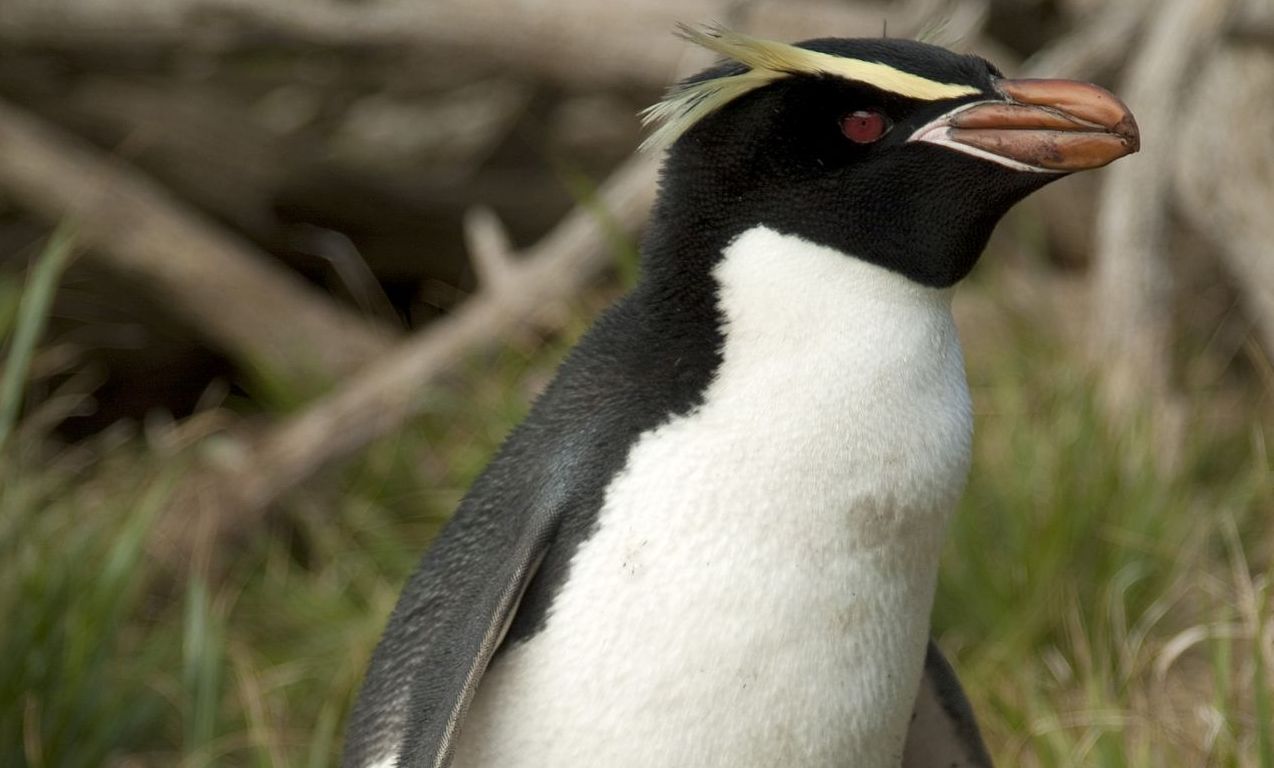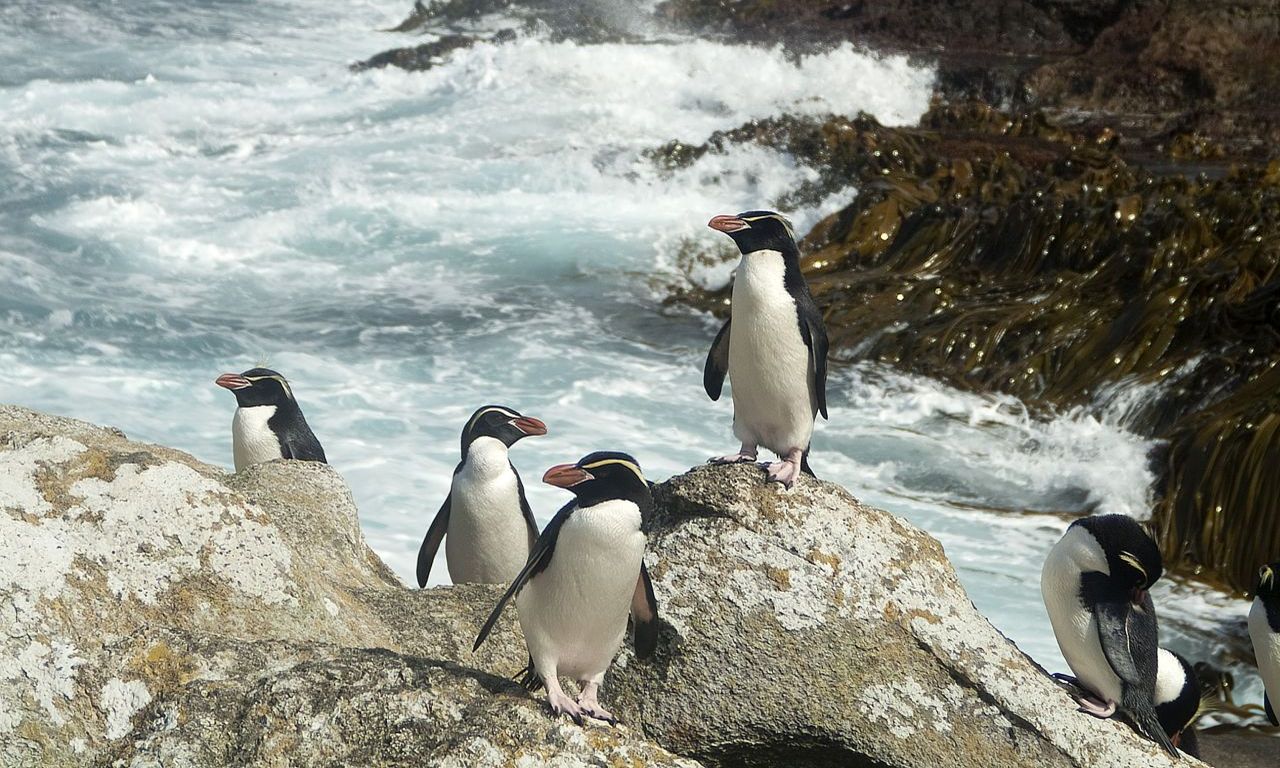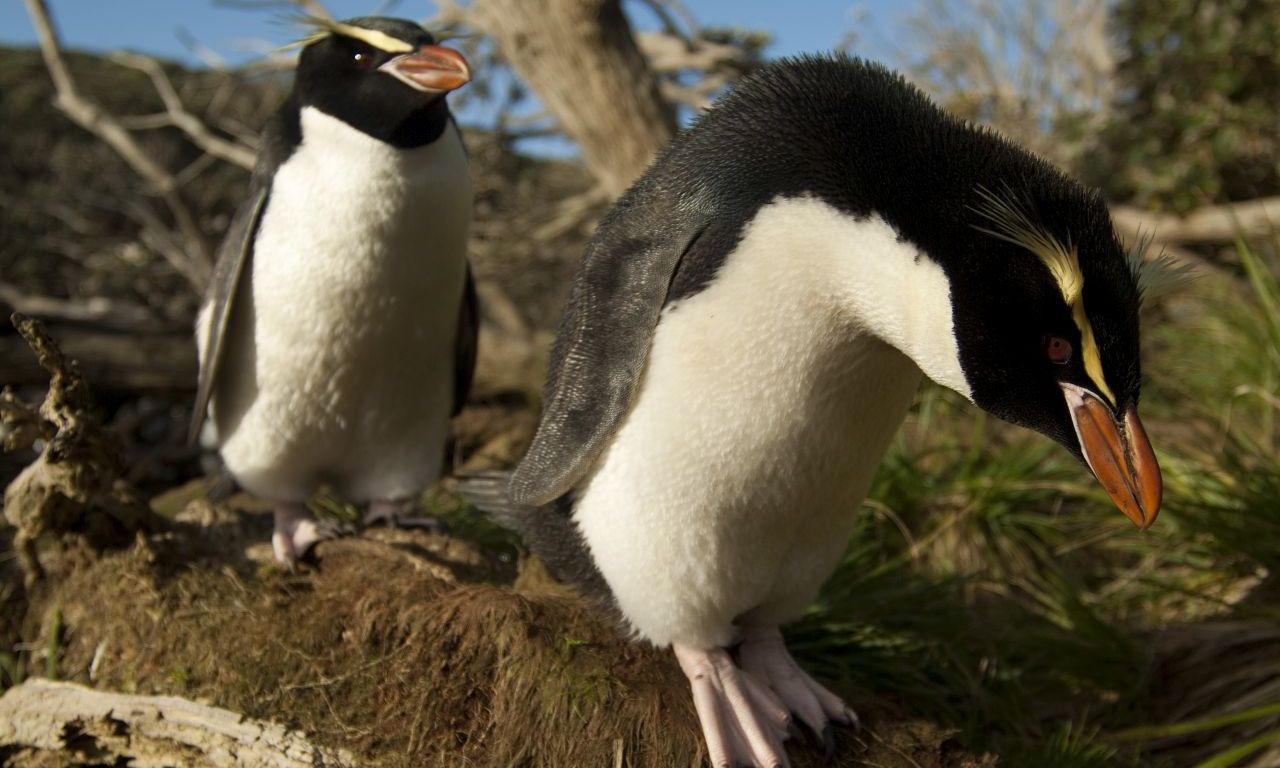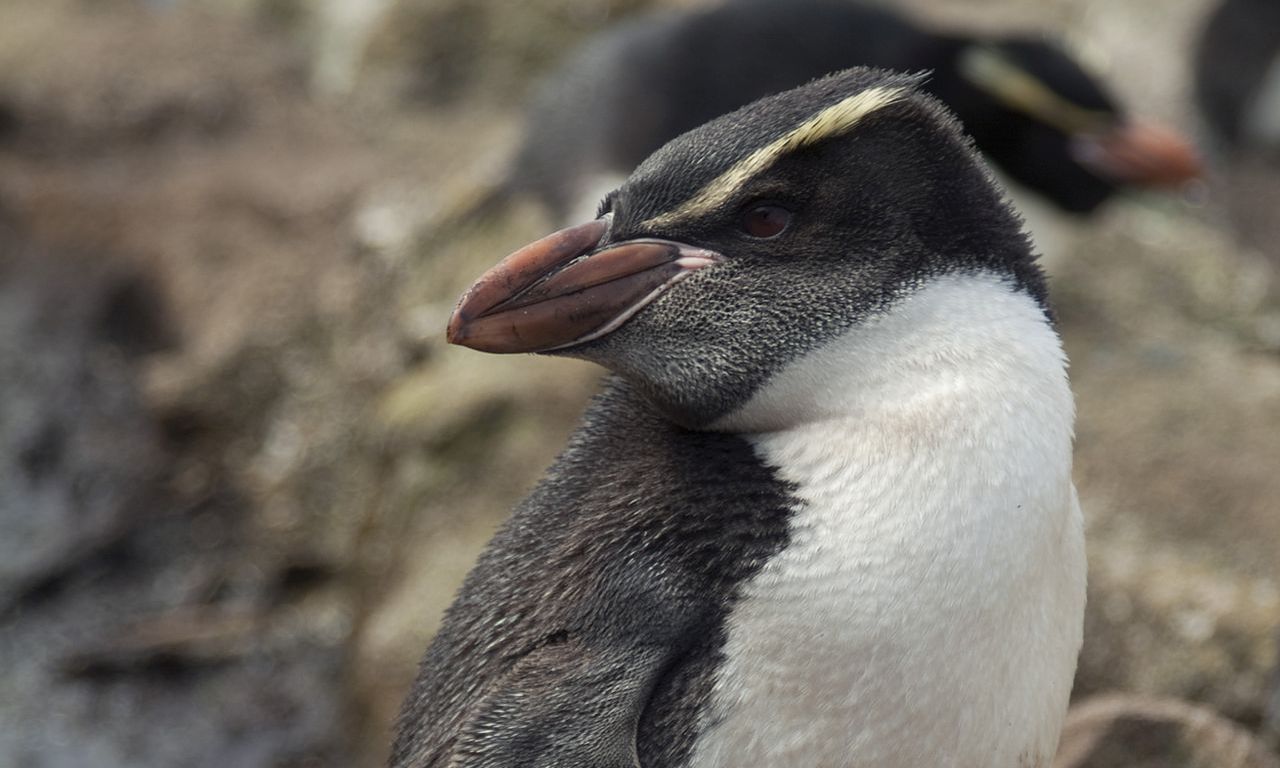Snares Penguin - Eudyptes robustus
- DESCRIPTION
- A medium-sized crested penguin (51-61cm, 2,8 -3,4 kg). Head, throat and upperparts dark blue or black that turns to a dark brown towards the molt. Undeparts white. Feet and legs pinkish white above, blackish brown behind the tarsi, on soles and at the front of webs. Yellow crest starts near the nostril, passes over the eyes and spreads out horizontally or droops a little distance behind the eyes. Crest feathers shorter than in Rockhopper penguins, but longer than in Fiordland penguins. Eyes reddish-brown. Large, orange brown bill with prominent bare skin at its base.
- DISTRIBUTION
-
Endemic of the Snares archipelago, 200 km south of New Zealand. Breeding
colonies located on North East Island (the main island), Broughton Island and
the islets Toru and Rima of the Western Chain.
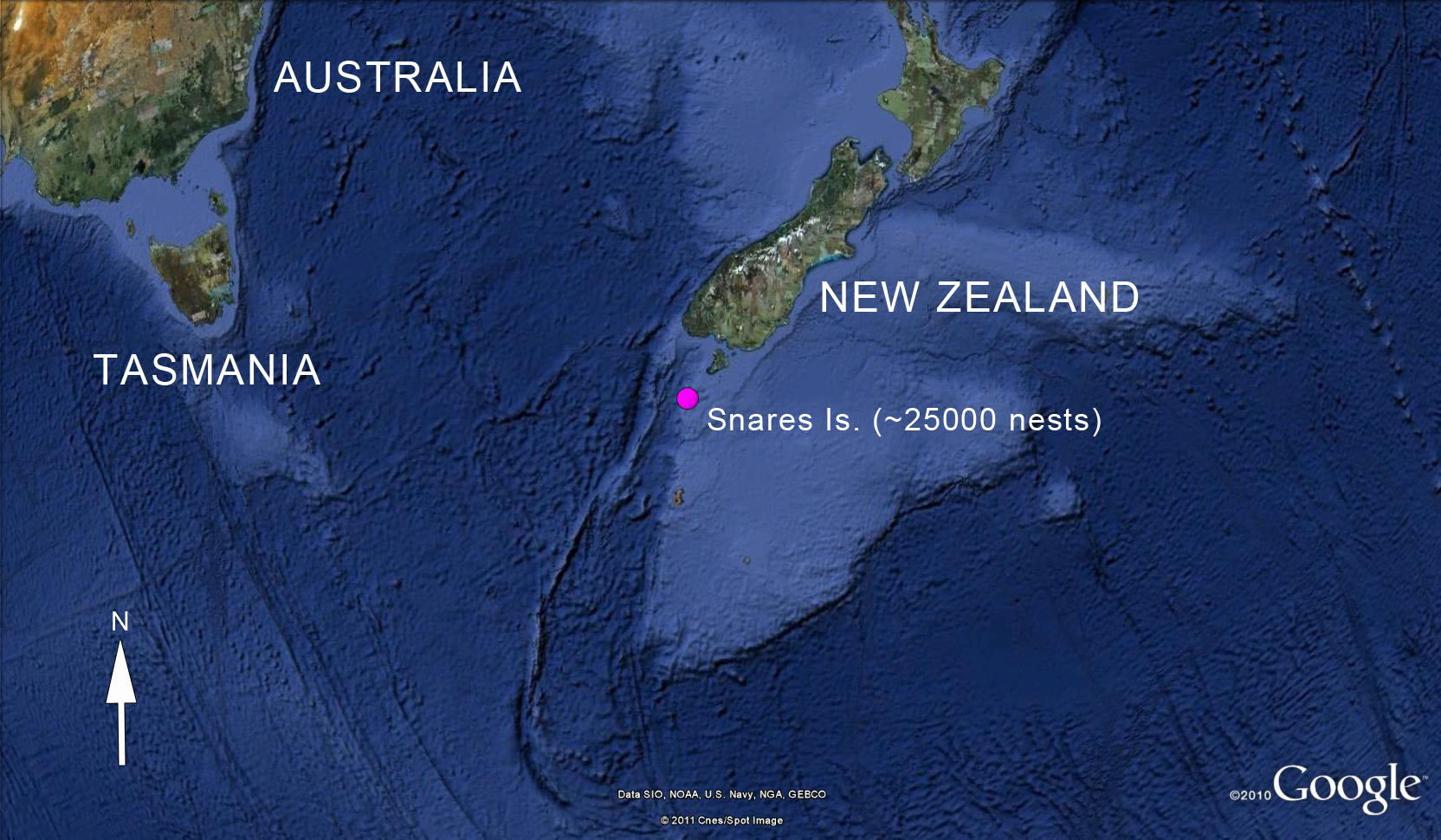
- HABITAT
- Marine, they nests under forest canopy, in bushy areas or rocky coasts. On North East Island, most colonies are located under forest canopy, in bushy areas or occasionally surrounded by tussock grass or open ground on bare rock. On Broughton Island, most colonies occur in open ground situations areas. On the Western Chain, they breed principally under boulders and in crevasses. Nests are scooped out hollows lined with mud and peat, stones, twigs, and bones.
- BREEDING BIOLOGY
- Colony sizes range from a less than 10 nests to 1300. Adult penguins arrive in the first three weeks of September. Two eggs are laid towards the end of September and beginning of October. For the first two weeks both partners remain at the nest, the female incubating continuously. Towards the end of September, males go to the sea returning after 10-14 days. The females then leave to forage for about a week, returning to the hatching of the eggs. Chicks start to form crèches around mid-November and fledge in mid- to late January. By early February all chicks have usually left the island.
- FEEDING
- Cephalopods, crustaceans and fishes. Important pelagic fish species are Emmelichthys nitidus and Pseudophycis bacchus, and squids Nototodarus sloani, Morotheutis ingens, and Histiotheuthis atlantica.
- REPRODUCTIVE POPULATION
- 24,000/29,000 pairs
- Conservation status (IUCN) and threats
- “Vulnerable D2” (IUCN Red List 2018), due to their small geographic range. Main conservation concerns are commercial fisheries, oceanographic changes, and oil spills.
- SOURCE
- Mattern, T. 2013. Snares Penguin (Eudyptes robustus). In PENGUINS: NATURAL HISTORY AND CONSERVATION (García Borboroglu, P.G. and Boersma P.D. eds.) University of Washington Press, Seattle U.S.A. 328 pp.
